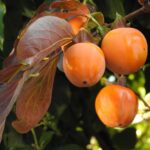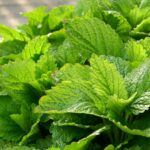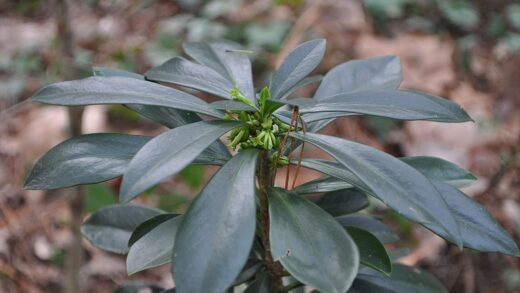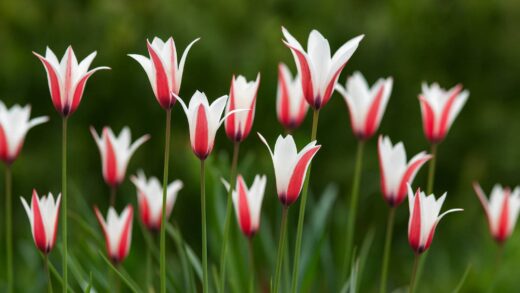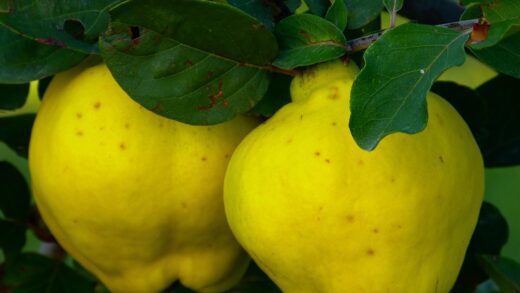Snow-on-the-mountain is a remarkably resilient and self-sufficient annual plant, cherished for the striking white variegation on its upper leaves that gives it a frosted appearance. Its cultivation is straightforward, making it a favorite among both novice and experienced gardeners looking for high-impact, low-effort additions to their summer landscapes. This plant thrives in conditions that might challenge more delicate species, preferring bright sun and tolerating a range of soil types with ease. Understanding its basic needs is the key to unlocking a spectacular display that lasts from mid-summer until the first frost, providing a cool visual contrast during the warmest months of the year.
Proper care for this plant begins with selecting an appropriate location, which is arguably the most critical decision you will make. Snow-on-the-mountain demands a spot that receives at least six to eight hours of direct sunlight each day to develop its signature variegated bracts. Without sufficient light, the plant will still grow, but it will tend to be leggy and the foliage will remain mostly green, defeating the purpose of growing it. The chosen site should also have excellent drainage, as the plant is highly susceptible to root rot in waterlogged conditions. Consider this a foundational step; getting the location right prevents a host of potential problems later in the season and ensures the plant performs to its full potential.
Once established, ongoing maintenance is minimal, which is a significant part of its appeal. It is notably drought-tolerant, requiring infrequent watering once its root system is well-developed. In many climates, normal rainfall is sufficient to sustain the plant throughout its growing season. Furthermore, it is not a heavy feeder and typically does not require supplemental fertilization, especially if planted in reasonably fertile soil. The primary care tasks involve managing its spread, as it can self-seed prolifically, and taking precautions when handling it due to its toxic, milky sap.
A key aspect of caring for any Euphorbia species, including snow-on-the-mountain, is understanding its potential hazards. The plant produces a milky white latex sap when its stems or leaves are broken, which can cause significant skin irritation, rash, or even blistering upon contact. It is imperative to wear gloves and protective eyewear whenever you are pruning, trimming, or removing the plants. This sap is also toxic if ingested, so it is crucial to plant it in areas away from the reach of curious children and pets. Awareness and simple protective measures ensure that you can enjoy the beauty of this plant without any adverse effects.
The importance of site selection
Choosing the perfect planting site is the cornerstone of successfully cultivating snow-on-the-mountain. This plant’s performance is directly tied to the amount of sunlight it receives, with full sun being non-negotiable for achieving the brilliant white markings on its upper leaves. A location that is bathed in sunlight for the majority of the day will encourage vigorous, compact growth and the most dramatic colour contrast. Shadier spots will result in taller, weaker stems and a significant reduction in the desired variegation, leaving you with a plant that is merely green. Therefore, observe your garden throughout the day to identify the sunniest possible area before you even consider planting.
More articles on this topic
Beyond sunlight, soil composition plays a vital role, although the plant is famously adaptable. Snow-on-the-mountain is not particular about soil pH and can thrive in poor, sandy, or gravelly soils where other ornamentals might struggle. However, the one condition it cannot tolerate is poor drainage. Consistently wet or heavy clay soils will lead to root rot, which is one of the few issues that can seriously harm this otherwise hardy plant. If your garden has heavy soil, consider amending the area with compost and sand to improve its structure and porosity, or plant in raised beds where you have complete control over the drainage.
Consider the plant’s mature size and growth habit when selecting its home in your garden. Snow-on-the-mountain typically grows to a height of about two to three feet and can spread to create a dense, bushy appearance. Give it adequate space to fill out without crowding its neighbors, as good air circulation is important for preventing potential fungal diseases, however rare. Its tendency to self-seed should also be a factor in your decision; plant it where you can either appreciate its volunteers the following year or where it is easy to manage their removal from unwanted areas.
Finally, think about the plant’s role within your overall garden design. Its fine-textured, light-green foliage and dazzling white bracts make it an excellent choice for creating contrast with darker-leaved plants or those with bold, colourful flowers. It can be used effectively in mass plantings to create a cooling, cloud-like effect in a border, as an accent plant, or in cottage garden schemes. Placing it thoughtfully among other plants not only enhances its beauty but also contributes to a more cohesive and visually interesting landscape design throughout the late summer and autumn months.
Understanding the growth cycle
The life cycle of snow-on-the-mountain is that of a true annual, meaning it completes its entire journey from seed to seed in a single growing season. Germination typically occurs in the spring as soil temperatures warm, with seedlings emerging as unassuming green shoots. The initial growth phase is focused on establishing a strong root system and developing its primary foliage, which is a soft, light green colour. During this early stage, the plant grows steadily in height and girth, but the characteristic white variegation is not yet present, so patience is required.
More articles on this topic
As summer progresses and the days lengthen, the plant enters its most dramatic phase of development. Triggered by the high light intensity and warmth, the upper leaves and bracts (specialized leaves surrounding the tiny, inconspicuous flowers) begin to develop their distinct white margins. This transformation is what gives the plant its common name and is the primary reason for its cultivation. The intensity of this variegation is directly proportional to the amount of sunlight the plant receives, serving as a clear indicator of whether its light requirements are being met. The actual flowers are small and lack petals, often going unnoticed amidst the showy bracts.
Following the flowering period, the plant shifts its energy towards seed production. Small, three-lobed seed capsules form where the flowers once were, each containing several seeds. As these capsules mature, they dry and eventually burst open, scattering the seeds across the surrounding area. This effective self-seeding mechanism ensures the continuation of the plant in the garden for the following year, though it can lead to it popping up in unexpected places. For gardeners who prefer more control, collecting these seed pods before they dehisce is a simple way to manage its spread.
With the arrival of the first hard frost in autumn, the plant’s life cycle comes to an abrupt end. The foliage will quickly blacken and the stems will die back, as it has no mechanism for surviving freezing temperatures. At this point, the plant can be removed and added to the compost pile. The seeds that it has dropped will lie dormant in the soil throughout the winter, ready to sprout the following spring and begin the cycle anew, providing a reliable and beautiful display year after year with minimal intervention from the gardener.
Essential maintenance practices
While snow-on-the-mountain is a low-maintenance plant, a few simple practices will keep it looking its best and ensure it remains a welcome feature rather than an invasive one. The most important ongoing task is managing its spread. Due to its prolific self-seeding nature, the plant can quickly colonize a garden bed. To prevent this, you can deadhead the spent flowers before they have a chance to set seed, though this can be a tedious process given the number of small blooms. A more practical approach for many is to simply pull up any unwanted seedlings the following spring when they are small and easy to remove.
Another key practice is to provide support if the plants become tall and leggy, which can happen in overly rich soil or slightly less than ideal light conditions. A single stake or a “grow-through” support grid placed early in the season can prevent the stems from flopping over, especially after heavy rain or strong winds. In most cases, however, plants grown in full sun and lean soil will develop strong, sturdy stems that are perfectly capable of supporting themselves. Pinching the tips of young plants when they are about six inches tall can also encourage a bushier, more compact growth habit, reducing the need for staking later on.
Watering practices are straightforward but crucial, particularly during the establishment phase. After initially planting seeds or transplanting seedlings, the soil should be kept consistently moist until the plants are well-rooted and showing new growth. Once established, however, their water needs decrease dramatically, and they become very drought-tolerant. Overwatering is a far greater risk than underwatering, as it can lead to weak growth and root rot. For the rest of the season, only provide supplemental water during prolonged periods of extreme heat and drought, allowing the soil to dry out completely between waterings.
Finally, end-of-season cleanup is an important maintenance step. After the first killing frost, the plants should be cut down to the ground and removed from the garden. This not only tidies the appearance of the bed for winter but also helps to prevent any potential diseases from overwintering on the dead plant material. Leaving the debris in place can create a damp environment that might harbour fungal spores. Composting the plant material is an excellent way to recycle its nutrients back into the garden ecosystem.
Handling and safety precautions
A critical aspect of cultivating any plant from the Euphorbia genus is being acutely aware of the toxic milky sap it contains. Snow-on-the-mountain is no exception; when any part of the plant is cut or broken, it exudes a white, latex-like substance. This sap contains diterpene esters, which are compounds that can cause contact dermatitis, a painful skin rash, or chemical burns in sensitive individuals. Therefore, it is absolutely essential to wear waterproof gloves whenever you are working with the plant, whether you are pruning, transplanting, or removing it at the end of the season.
Beyond protecting your hands, it is also wise to protect your eyes. A small splash of the sap in an eye can cause severe irritation, inflammation, and temporary blindness, requiring immediate medical attention. Wearing safety glasses or sunglasses provides a simple but effective barrier against accidental splashes, especially when cutting multiple stems. If you do get sap on your skin, wash the affected area thoroughly with soap and water as soon as possible. It is also a good practice to wash your gardening tools after working with the plant to remove any sticky, toxic residue.
The toxicity of the sap extends to ingestion. All parts of the snow-on-the-mountain plant are poisonous if eaten and can cause symptoms such as nausea, vomiting, and diarrhea. For this reason, it is crucial to site the plant thoughtfully, keeping it away from areas where small children or pets play. While the unpleasant taste of the sap usually deters animals from consuming a large amount, even a small quantity can be harmful. Educating family members about the plant’s nature is a key part of responsible gardening.
Despite these precautions, the plant should not be feared, but rather respected. Its toxicity is a natural defense mechanism that also makes it highly resistant to browsing by deer and rabbits, a significant advantage in many gardens. By simply adopting a routine of wearing gloves and being mindful when handling the plant, you can easily and safely enjoy its unique beauty. The required safety measures are minor inconveniences when weighed against the striking visual appeal it brings to the late-summer garden.
Companion planting and design
Snow-on-the-mountain serves as a brilliant design element in the garden, acting as a versatile partner for a wide array of other plants. Its cool white and green tones provide a wonderful neutral backdrop that can either tame a chaotic mix of hot colours or elevate a more subdued palette. Pair it with plants that have deep, rich flower colours, such as purple salvias, dark red zinnias, or blue ageratum, to create a stunning and dramatic contrast. The bright white bracts make the adjacent colours appear more vibrant and saturated, ensuring the combination really pops in the landscape.
The plant’s fine texture and airy quality also make it an excellent companion for plants with bold, coarse foliage. The large leaves of cannas or the broad, dramatic foliage of castor bean plants, for instance, create a dynamic textural interplay when planted near the delicate leaves of snow-on-the-mountain. This contrast in form and texture adds a layer of sophistication and interest to garden compositions. Similarly, it can be used to soften the hard edges of structures like walkways or patios, with its mounded form spilling gently over the borders.
When planning a border, consider using snow-on-the-mountain in large drifts or as a repeating element to create a sense of rhythm and cohesion. A mass planting can produce a breathtaking effect, resembling a low-lying cloud or a patch of late-lingering snow in the heat of summer. It is particularly effective in cottage gardens, where its self-seeding habit is often welcomed, allowing it to weave naturally among other classic annuals and perennials. Its upright, bushy habit also makes it a good “filler” plant, adept at occupying the middle of the border and bridging the gap between shorter edging plants and taller background specimens.
Finally, remember that this plant is an outstanding choice for a cut flower garden. The long, sturdy stems with their variegated tops make for unique and long-lasting additions to floral arrangements, either on their own or mixed with other flowers. When harvesting stems for bouquets, be sure to wear gloves and sear the cut ends with a flame or dip them in hot water for a few seconds. This simple step stops the flow of the milky sap, which not only prevents a mess but also significantly extends the vase life of the cuttings.







